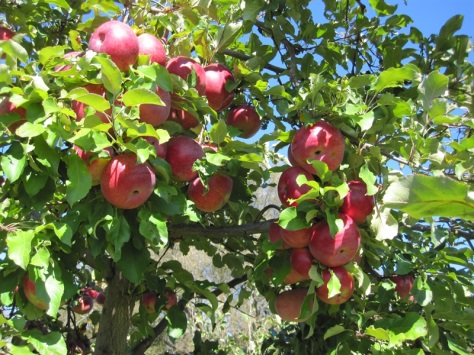Growing Apples
Size, quality and availability of fruit depends largely on nature. In our apple orchard pruning begins each February to allow apples maximum air and light.
During their first year Randy is providing some advice on growing apples but the new owners will do things their way! This page is about what we did.

Cold weather or frost at blossom time can have an adverse affect on the crop. In cold and wet weather bees may not fly and pollinate the trees. Hail is never good and timing can make or break a season. Some trees are biennial and bear fruit every second year. Warm, sunny weather and adequate rainfall are required for good sized fruit and colour.
Pests and diseases such as apple scab will ruin fruit. Because we are a small orchard we can use Integrated Pest Management(IPM) as a tool. IPM relies on pest and orchard monitoring and use of pesticides only when pests exceed levels capable of causing crop loss. Pesticides used are those which will have least impact on beneficial insects, bird and wildlife in the orchard.

We use mulching under the trees to supress weeds and improve soil structure. Our orchard is alive with wildlife including bluebirds and northern flickers that feed off the orchard floor. Keep an eye open for our pet chipmunks!
We don’t wax our apples. The haze or blush on them is their natural protection and can be wiped off just before eating. All fruit whether commercial or wild should be washed before eating.
Sample some unusual fruit varieties. You may be surprised how good apples can taste when they are fresh from the tree!